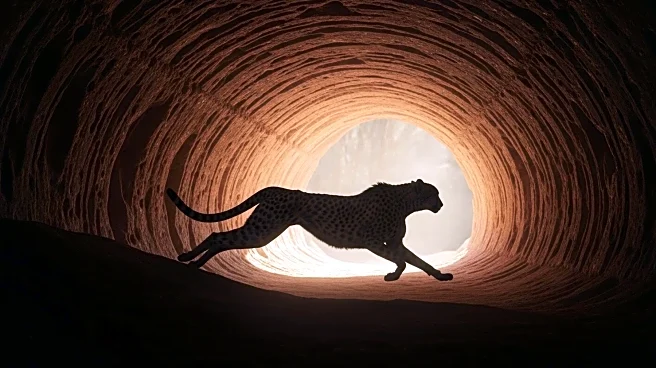What's Happening?
Researchers have discovered naturally mummified cheetahs in caves in Saudi Arabia, marking the first such finding of big cats. The mummification occurred due to the constant temperature and low humidity in the cave network. The remains, dating from 4000 to 100 years ago, include seven mummified cheetahs and skeletal remains of 54 others. The discovery was made during surveys in the Lauga cave network in northern Saudi Arabia. The mummified cheetahs provide valuable insights into the historical presence and decline of cheetahs in the Arabian Peninsula, which were eradicated decades ago due to habitat loss and hunting.
Why It's Important?
This discovery is significant for understanding the historical distribution and adaptation of cheetahs in arid environments. The findings suggest that cheetahs, including subspecies related to the Asiatic and northwest African cheetahs, once inhabited the region. This could inform conservation strategies, potentially allowing for the reintroduction of cheetahs to the area using captive individuals from more numerous African subspecies. The research also contributes to the broader understanding of wildlife preservation and the impact of environmental conditions on species survival.
Beyond the Headlines
The mummification of cheetahs in Saudi Arabia raises questions about the ecological history of the region and the factors that led to the decline of these big cats. The presence of young cheetahs suggests that adult females may have used the caves for shelter, indicating complex behavioral patterns. The findings also highlight the potential for natural preservation processes to offer insights into ancient ecosystems, which could be applied to other regions and species facing similar threats.












